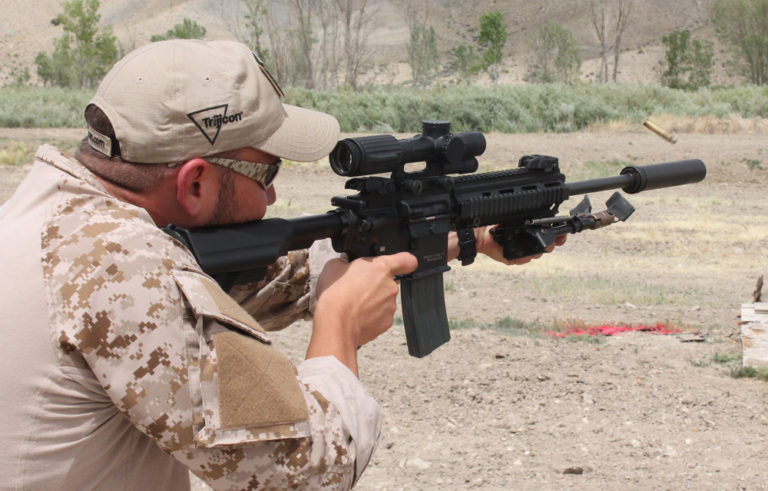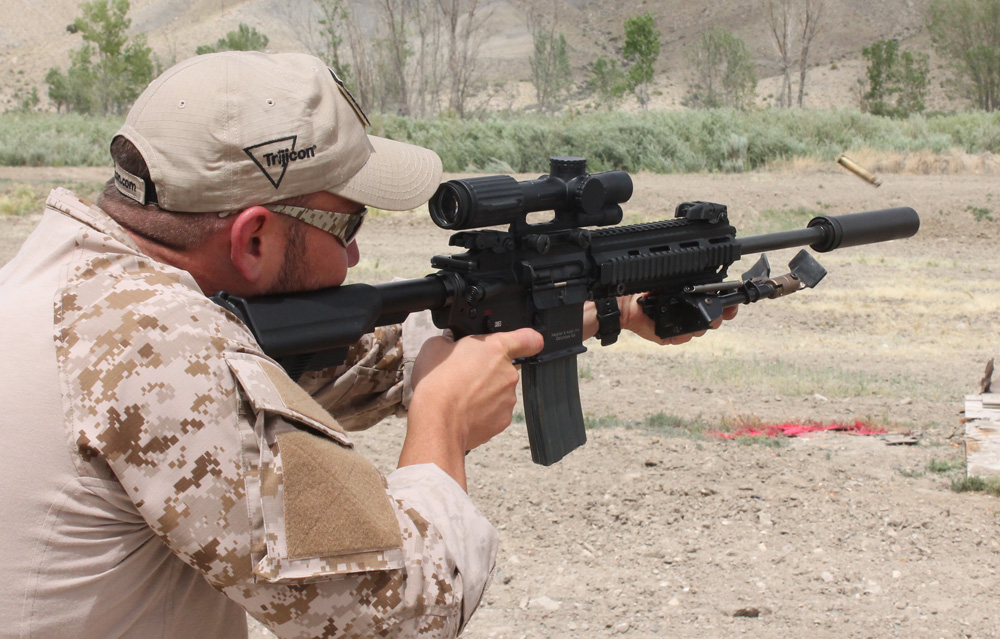
Many shooters express concerns with POI, or Point of Impact, shift when using a suppressor. Unfortunately, a lot of people aren’t 100 percent sure what that is, even though it’s a very simple concept.
At a high level, POI shift is simply the shift of the bullet when a suppressor is installed. It’s typically measured in MOA (Minute of Angle); so a POI shift of 2 MOA would indicate a 2-inch shift at 100 yards, 4-inch at 200 yards, etc.
With suppressors, there are really two types of POI shift to be concerned with:
POI Shift When Mounting The Suppressor
When you put a suppressor on, or take it off, you’ll typically see some POI shift. We’ve run quite a few tests on this and have found that the initial POI shift tends to be more impacted by the threads on the weapon rather than the suppressor. So, if you run 10 different suppressors on the same gun, they will generally all shift in the same general direction.
There are a couple of cases where you’ll see no POI shift at all:
- If the threads on your weapon are perfectly aligned with the bore.
- If you are using a suppressor with a larger bore, it typically won’t impact POI as much as a smaller bore suppressor. (It won’t be as efficient as a smaller bore suppressor either.)
The initial POI shift will be repeatable with most suppressors; so, it should shift to the exact same place every time you put the suppressor on or take it off. It’s not uncommon at all to see a shift of 2 MOA (i.e. 2 inches at 100 yards), but still see an improvement in accuracy (your group sizes shrink). In this case, simply rezero your optics and call it good.
If you see larger POI shifts of 8 MOA or more (i.e. 8 inches at 100 yards), that’s the time to take care to avoid possible issues. The best thing to do is to have a gunsmith check the threads on your weapon to be sure they’re concentric (which means the threads are fully aligned with the direction your bore is pointing).
You’ll hear a lot about suppressors that claim to have no POI shift—but that’s typically only possible if the silencer’s bore size is made larger than necessary. The problem with that is a larger bore will result in a less efficient suppressor—so you’re often trading the slight POI shift for decreased suppression. Remember that a POI shift is NOT the same as a decrease in accuracy; and, it’s often possible to see a POI shift and an increase in accuracy at the same time.
POI Shift From Shot To Shot
The second type of POI shift is a shift that occurs from shot to shot—and this is generally more related to the mounting system of a quick attach suppressor.
Although mounting systems have improved a lot over the last few years, and it’s often possible to see the same accuracy from direct thread and quick attach suppressors, many locking quick-attach designs will result in a loss of accuracy. That loss of accuracy is a result of the slight movement of the suppressor as it shifts on the mount from shot to shot.
Because of this loss of accuracy on some quick-attach mounts, many accuracy shooters will only use direct thread suppressors because they don’t have any shot-to-shot wobble. Some of the new compression mounts and small tooth mount systems are also starting to venture into the accuracy realm.
Most modern quick-attach systems are capable of at least 1.5 MOA accuracy. Most people are shooting larger groups than that anyway and typically won’t see much, if any, change in accuracy.
At the end of the day, the initial POI shift isn’t a very big deal in most cases. As we already mentioned, just put on the suppressor and rezero your weapon.

Next Step: Get your FREE Printable Target Pack
Enhance your shooting precision with our 62 MOA Targets, perfect for rifles and handguns. Crafted in collaboration with Storm Tactical for accuracy and versatility.
Subscribe to the Gun Digest email newsletter and get your downloadable target pack sent straight to your inbox. Stay updated with the latest firearms info in the industry.


![Best Concealed Carry Guns In 2025 [Field Tested] Wilson Combat EDC X9S 1](https://gundigest.com/wp-content/uploads/Wilson-Combat-EDC-X9S-1-324x160.jpg)


![Best 9mm Carbine: Affordable PCCs [Tested] Ruger Carbine Shooting](https://gundigest.com/wp-content/uploads/Ruger-Carbine-Shooting-100x70.jpg)
![Best AR-15: Top Options Available Today [Field Tested] Harrington and Richardson PSA XM177E2 feature](https://gundigest.com/wp-content/uploads/Harrington-and-Richardson-PSA-XM177E2-feature-100x70.jpg)
